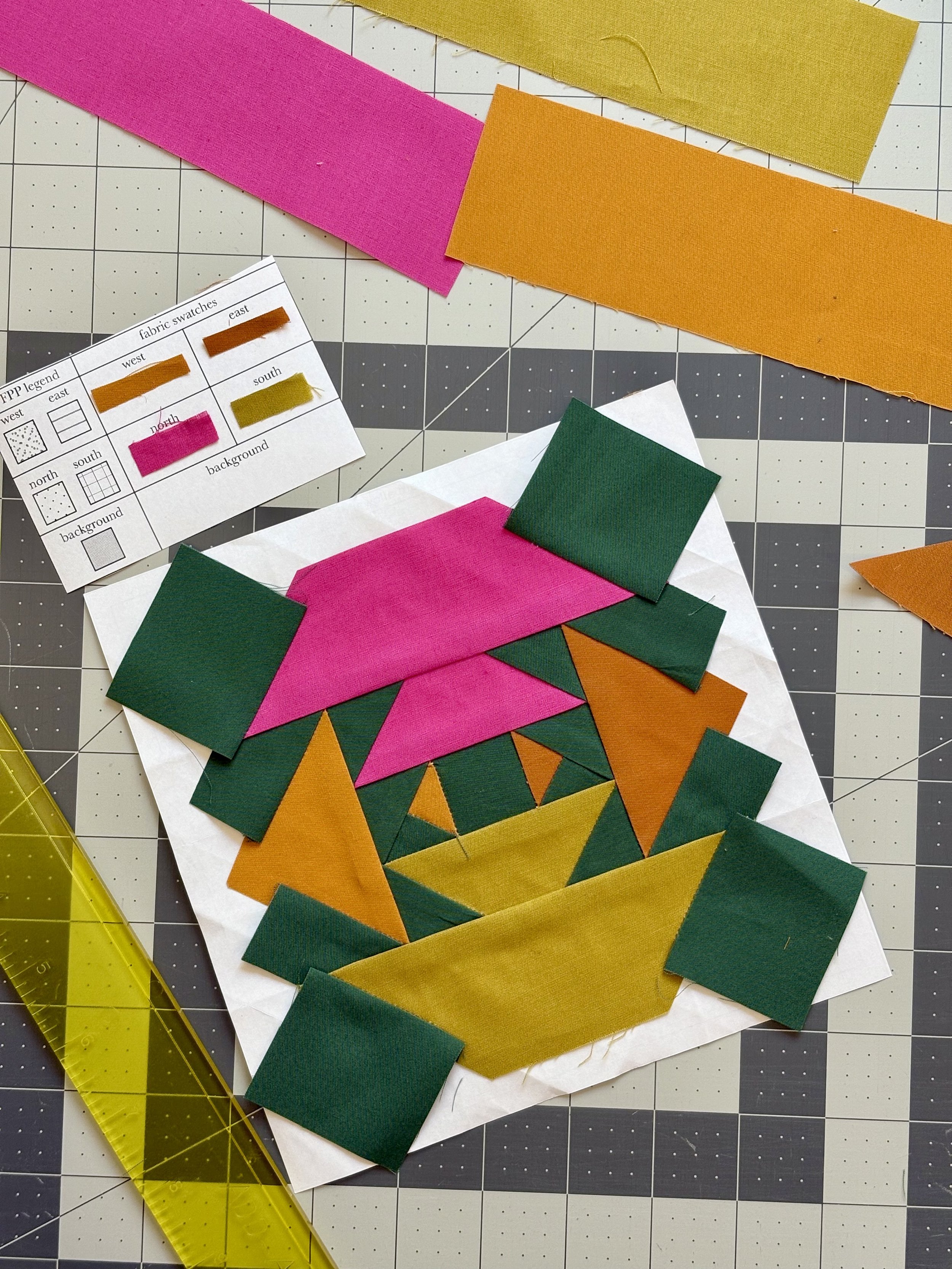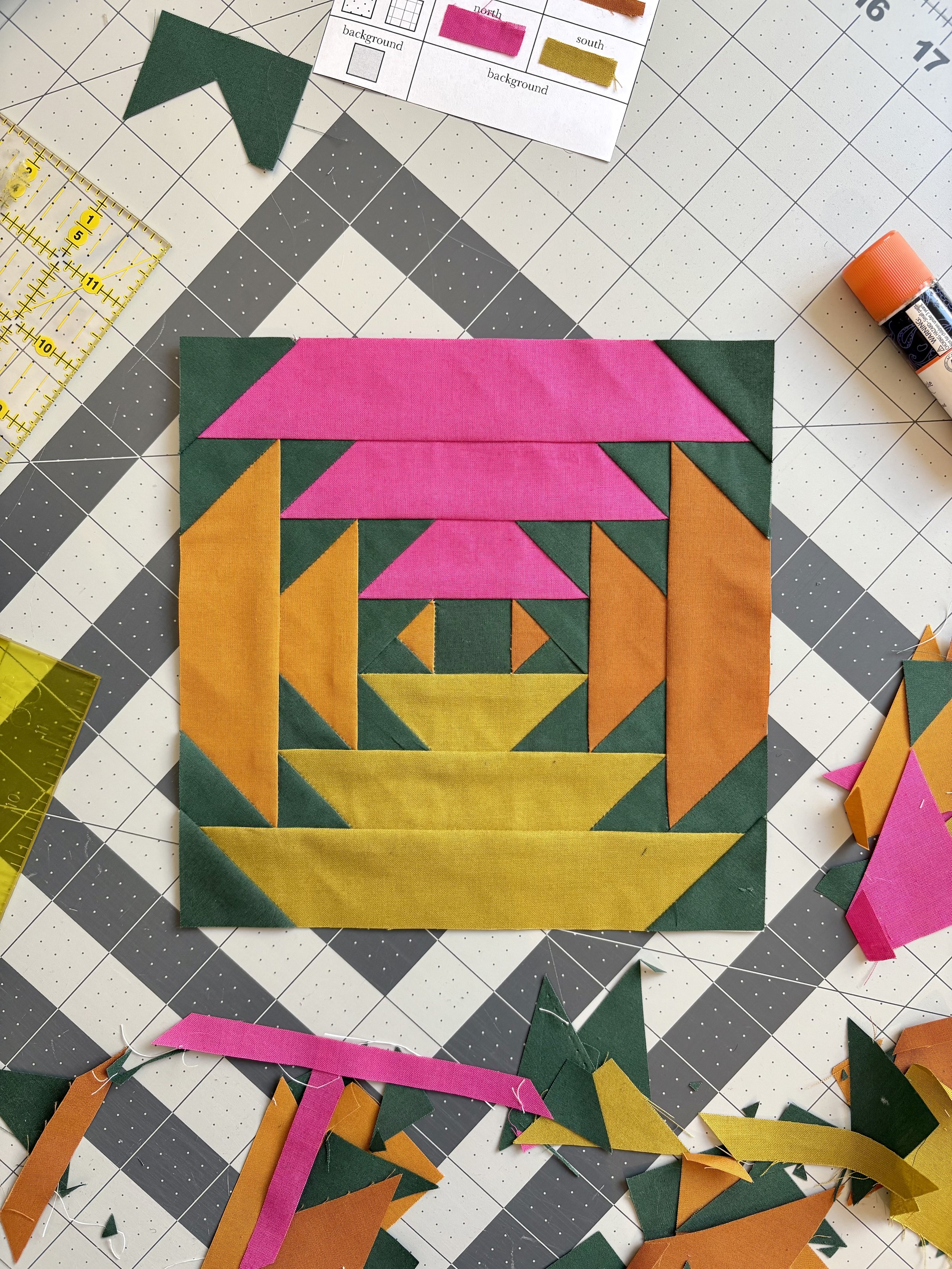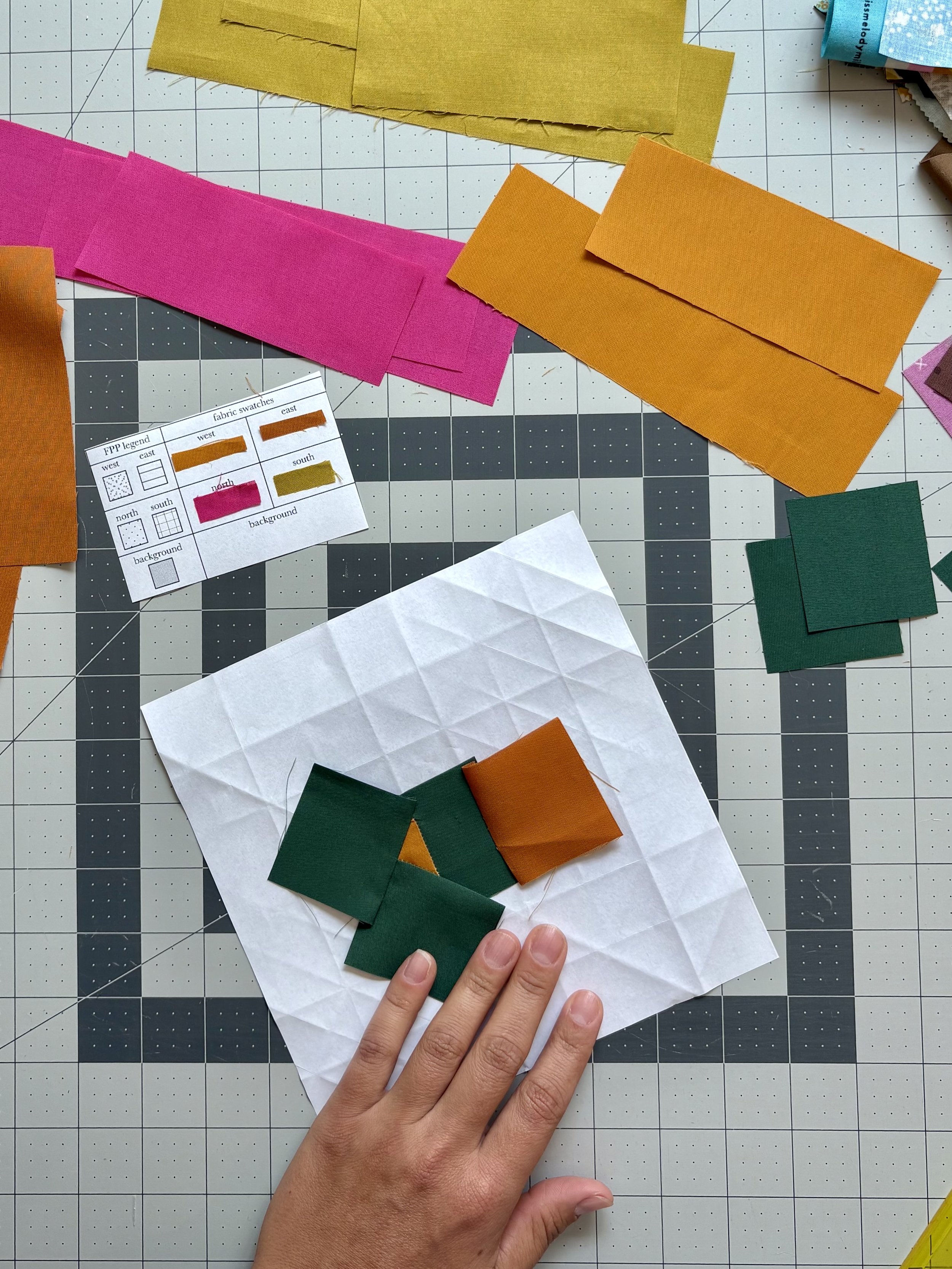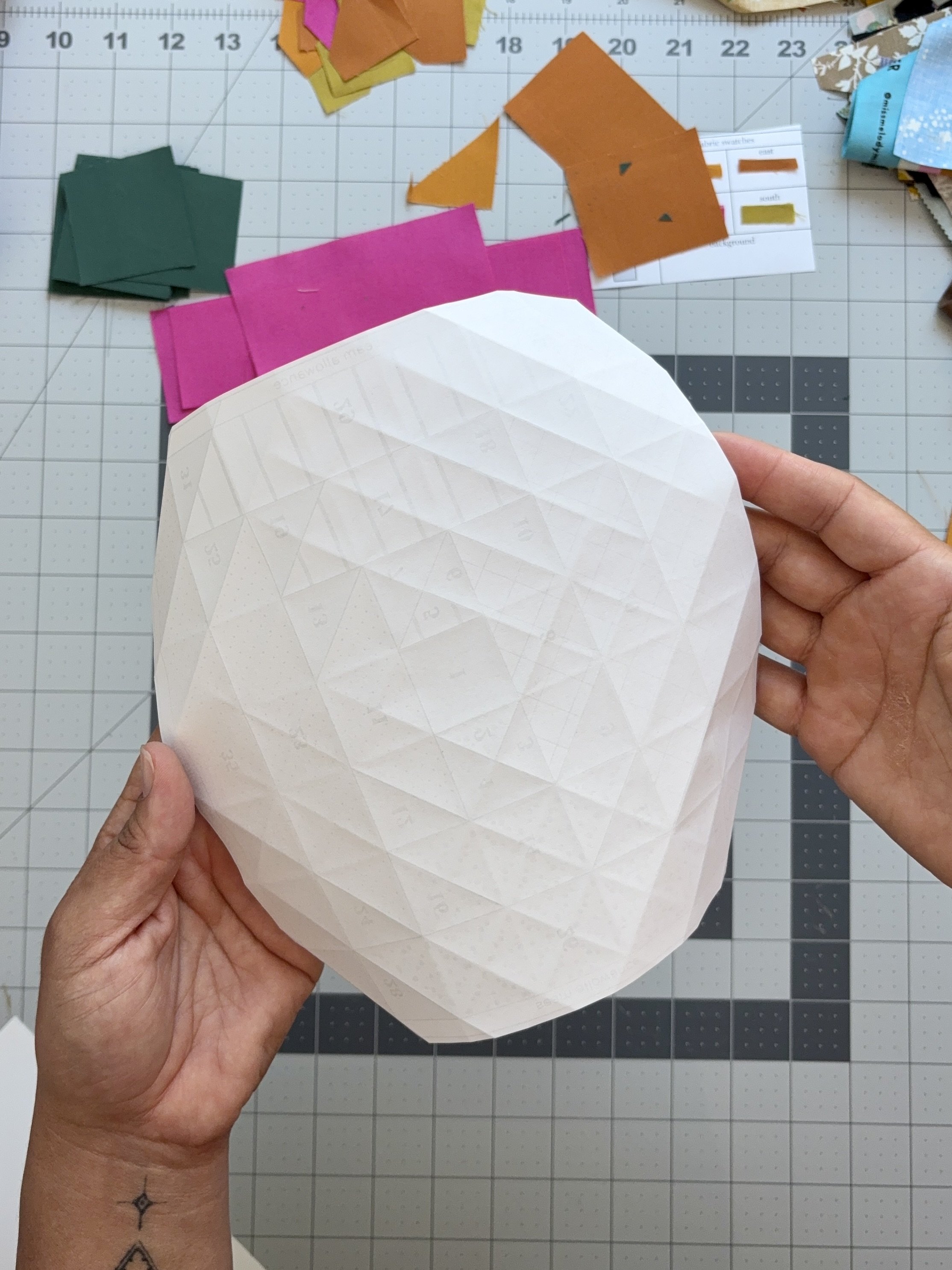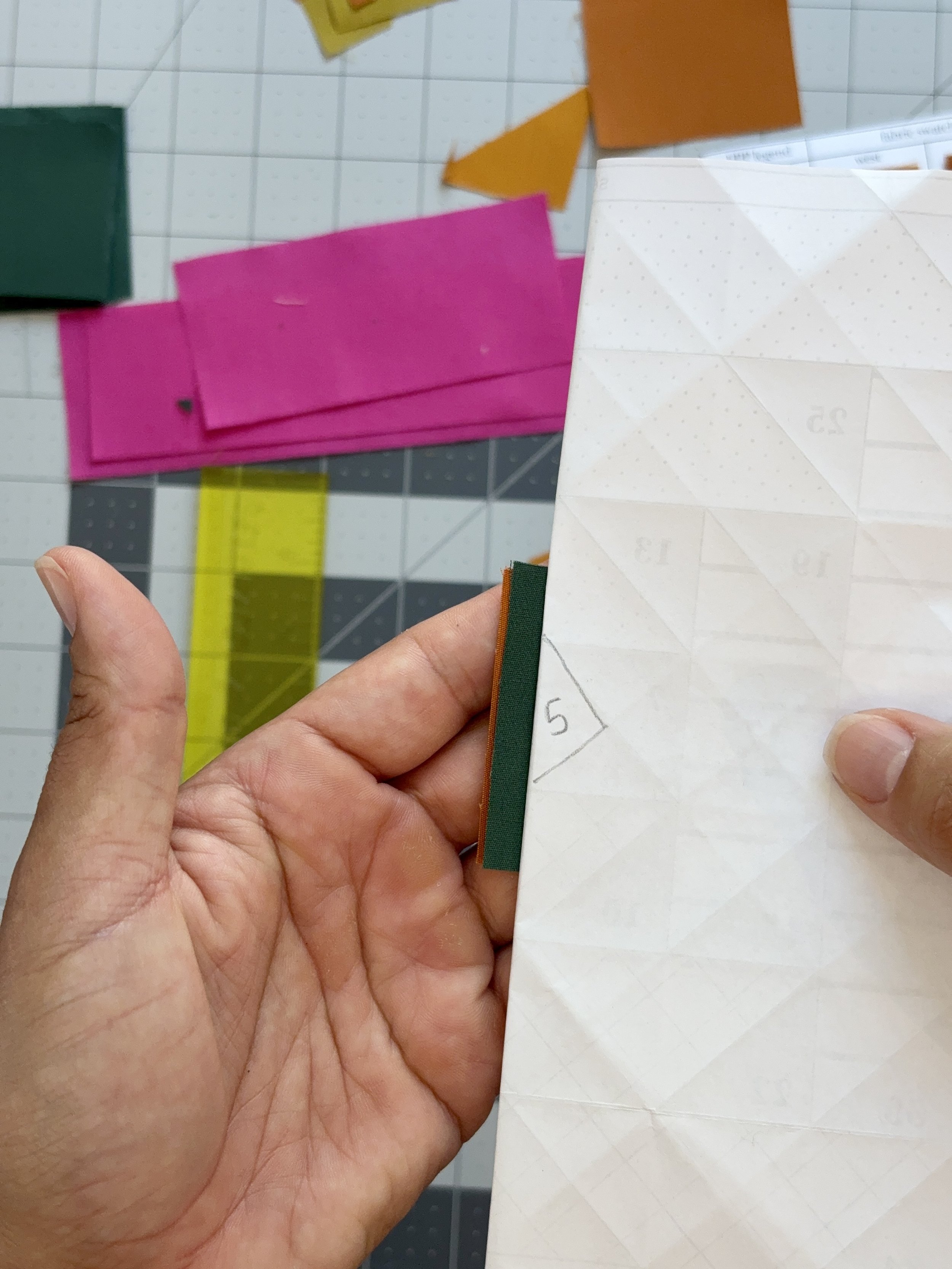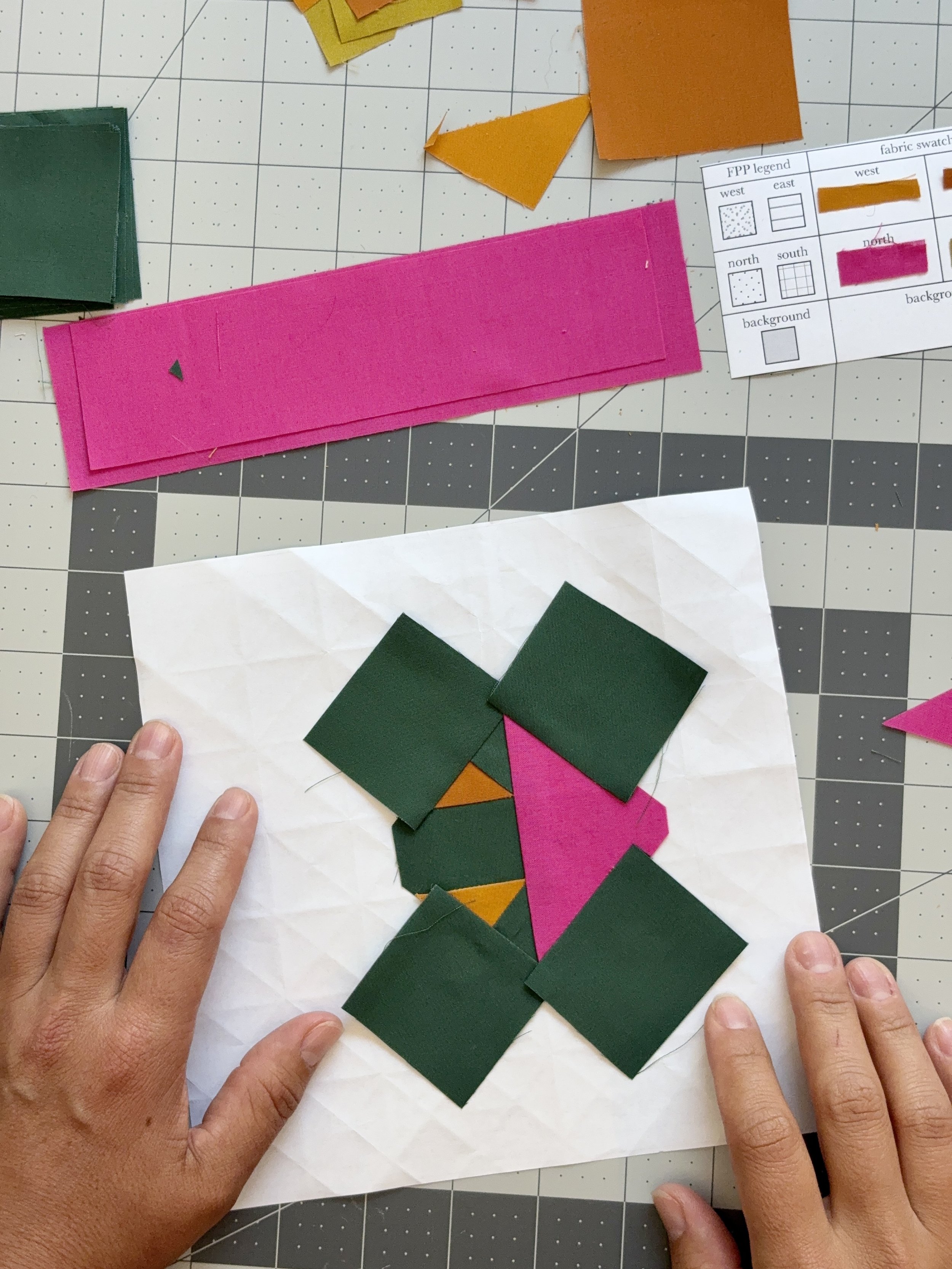My Top Five FPP Tips
Foundation paper piecing isn’t my favorite piecing method, but when it works, it really works. The results are undeniably breathtaking. Not only does the method lend itself to some incredible designs (have you seen the patterns that Veruschka at Pride and Joy Quilting creates?) but the level of accuracy you can achieve makes my brain purr.
When I designed the Alma quilt block, I went back and forth over the decision to make it an FPP pattern. This is definitely a pattern that could be made without FPP. The block is inspired by the traditional courthouse steps block, so I could have written the pattern to be assembled that way. But I really wanted to emphasize accurate piecing, and when you want accurate piecing, you just can’t beat FPP.
And rather than offer yet another tutorial on how to foundation paper piece, I thought I’d offer you my top five tips for foundation paper piecing instead.
One: Use Solids
I’d call myself an intermediate FPP quilter. I don’t need to relearn the method every time I start a new project and I can interpret most FPP templates pretty easily. That said, I rarely finish an FPP project without seam ripping at least a handful of seams. You know when I have to seam rip the most? When I use prints. It’s so easy to get turned around and forget with side is right and which sides are supposed to face each other.
If you are new to FPP or are still gaining confidence in the method, I highly recommend sticking to solids. Then there is no right or wrong side to the fabric and you have one less thing to think about.
Two: Find A Pattern With Instructions To Precut Fabric
FPP patterns can be fantastic for using irregularly sized scraps. It’s not really a requirement to precut fabric, but while you’re learning the method or if you’re trying to make multiple of the same FPP block, having precut fabric units can be so helpful. First, you can be sure that the piece will fit the template area. Second, it helps speed up the process when working on multiple, identical blocks.
It just so happens that the Alma quilt block offers instructions to precut your fabric if you want 😉.
Three: Prefold The Template
There are a couple reasons I like to prefold my template. First, I can use the crease lines to help gauge if my fabric unit is aligned correctly. Second, I think it saves time during construction. There is a lot of switching between tools during FPP; if everything is prefolded, that’s one “switch” I can remove from each step. Third, it helps make the paper template more pliable when I’m maneuvering it under the machine. It’s not so stiff and it fights me a less than an unfolded paper would.
Four: Draw On The Back Of The Template
Many FPP tutorials will tell you to hold the template up to a window or a light box to determine if your fabric unit is placed correctly. Well, I sew in a basement with dark windows and I don’t want to invest in a light box. My solution? I draw on the back of the template to help me visualize which area I’m sewing next. This is possible because I’ve prefolded the template and can easily trace the lines and transfer the information from the front.
In this photo, I’m using the visual information from my drawing and feeling the fabric on the underside to determine that the fabric is aligned correctly and will sufficiently cover the area when all sewn up.
Five: When Possible, Sew Multiple Pieces At Once
This tip is slightly specific to the Alma block, and difficult for me to help you apply this to other FPP patterns. But you want to keep an eye out for areas where you can prep and sew multiple pieces at one time. In the Alma quilt block, let’s call the pink fabric below area 8. The next areas to sew are 9 and 10. Areas 9 and 10 do not intersect, so I can prep fabric, sew and press them at the same time. This just helps speed up the sewing process, and lets me work a little more efficiently. Areas like this are all over the Alma block, so you can really speed sew your way through this project.

